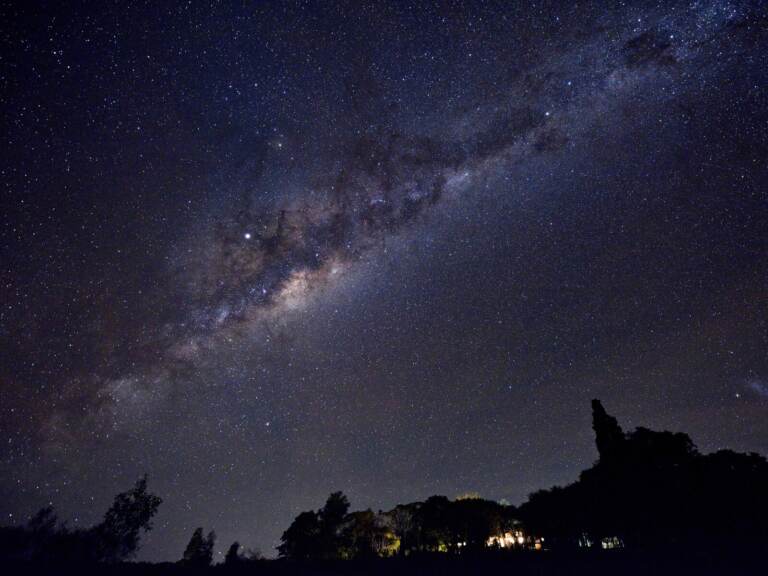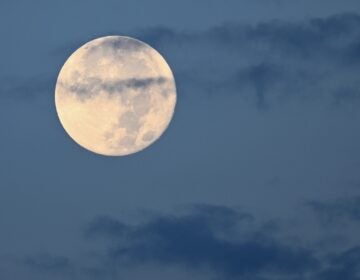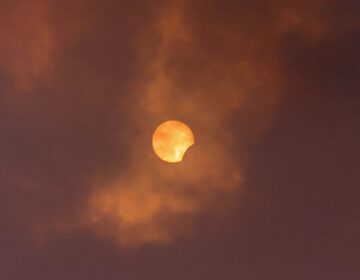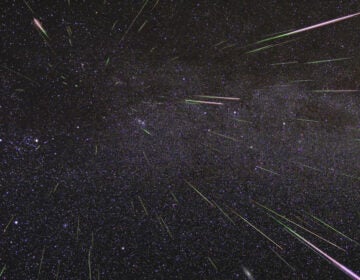It’s a bird! It’s a plane! It’s a pretty neat planetary viewing!

Jupiter, the brightest spot near the middle of this image, will be a standout this week. (Mariana Suarez/AFP via Getty Images)
This week, you have an opportunity to acquaint yourself with some of our solar system neighbors and reduce some of your screen time.
Who are they? That all depends on the weather. But Jupiter, Mercury, Venus, Uranus, and Mars will dazzle us earthlings this week.
What’s the big deal? Over the next couple of nights, the planets are expected to align.
- It’s an opportunity to take a glimpse at a “planetary parade,” according to Rick Fienberg, senior contributing editor of Sky & Telescope magazine. And he says you won’t need a telescope — although some binoculars, an unobstructed view of the horizon, and clear skies will certainly help.
- It’s neat, though not particularly unusual, says Jackie Faherty, astrophysicist at the American Museum of Natural History.
- “I want people to want to go outside and look up. I want people to be excited about looking up at the stars and planets. Right now what’s happening is something that you might not realize does happen quite a bit, which is the planets are up a lot. This is not a particularly rare event, but it is an event that you should celebrate and you should want to go outside and look at.”
- What you see will largely depend on where you are, according to reporting by NPR’s Joe Hernandez. Those in the northern hemisphere might have a better shot at catching these celestial vibes.
- Venus will be the brightest, so it might be easier to spot. The reddish Mars will shine brightly near the moon, while nearby Uranus may appear faint and only be visible through binoculars.
Want more science journalism? Listen to the Consider This episode on the most successful global public health plan you’ve probably never heard of.
What are people saying?
Fienberg’s tips on catching a glimpse:
Wait until the sun has set and then go out and look low in that bright part of the sky where the sun has just set with binoculars, and you should see brighter Jupiter next to fainter Mercury.
Faherty on a recent increased public interest in all types of astronomical happenings:
The nighttime sky is the original Netflix. It’s the original entertainment, and people lost that, because they’re disconnected from looking up, and they’re very connected to looking down at their phone or their tablet or their computer or whatever. Because things [can be] bright in the sky, when you accidentally look up, they will look striking to you.
Fienberg on the waves of interest in astronomy:
Most people don’t pay attention to the night sky the way astronomy enthusiasts do, so they may not realize that some of the bright dots up there are even planets. So when the planets are all visible at the same time at a particular time of the year, it becomes a news story and people suddenly pay attention to the planets.
So, what now?
- Gear up for April, where the Lyrid meteor shower is expected to take place from the middle of the month.
- Look up more! You might spot a planet, or just a glance at a beautiful, expansive, inky night sky.
Learn more:
- If ChatGPT designed a rocket — would it get to space?
- A 3D-printed rocket launched successfully but failed to reach orbit
- Scientists think they know why interstellar object ‘Oumuamua moved so strangely
9(MDAzMzI1ODY3MDEyMzkzOTE3NjIxNDg3MQ001))




